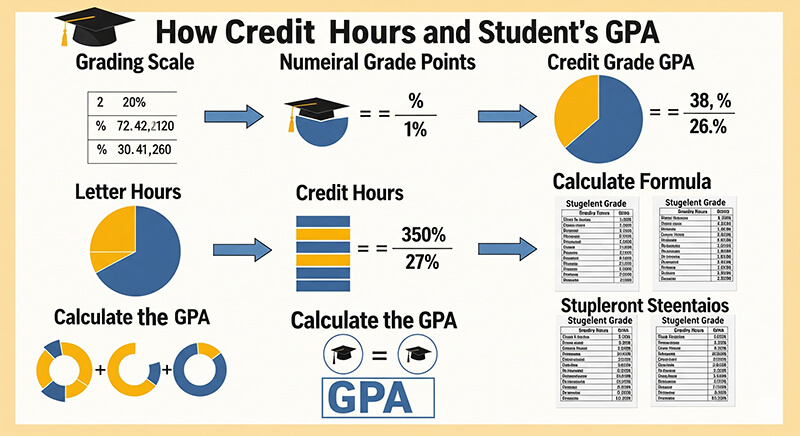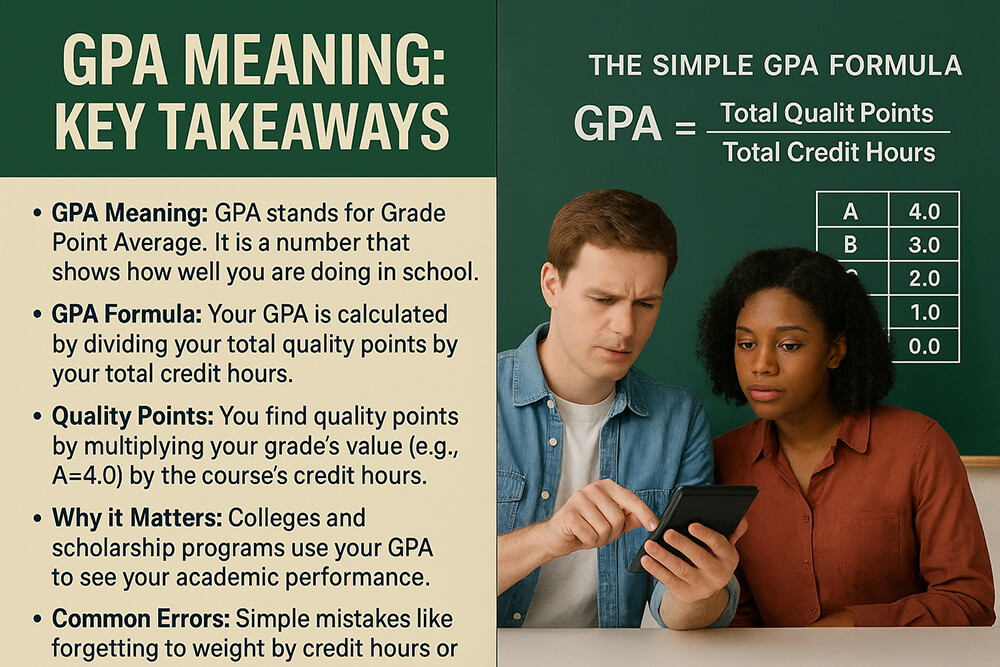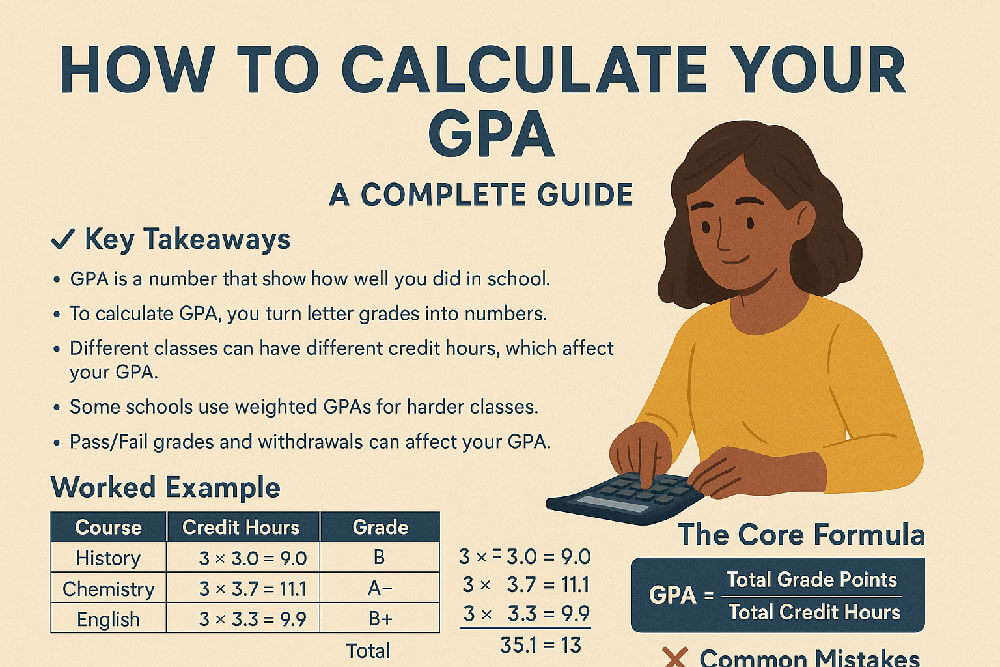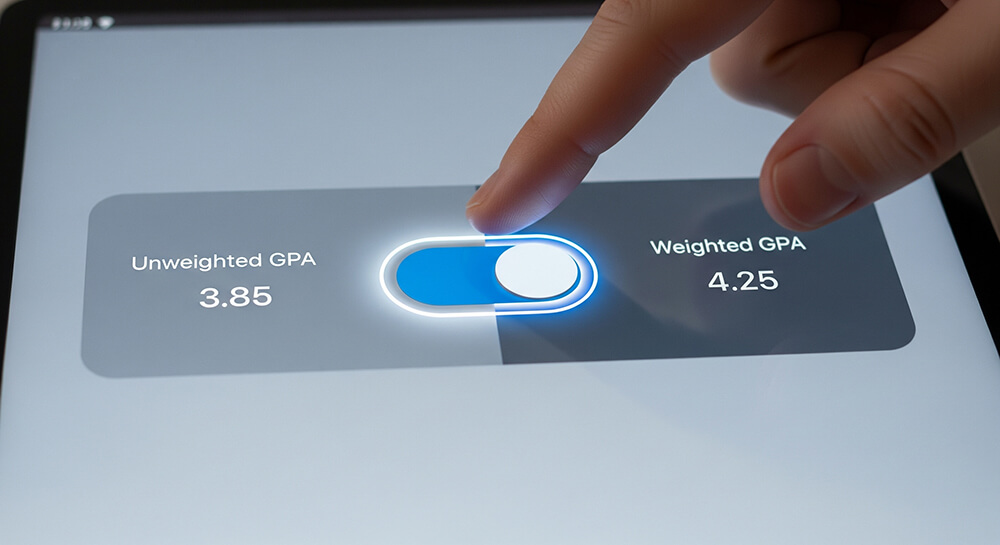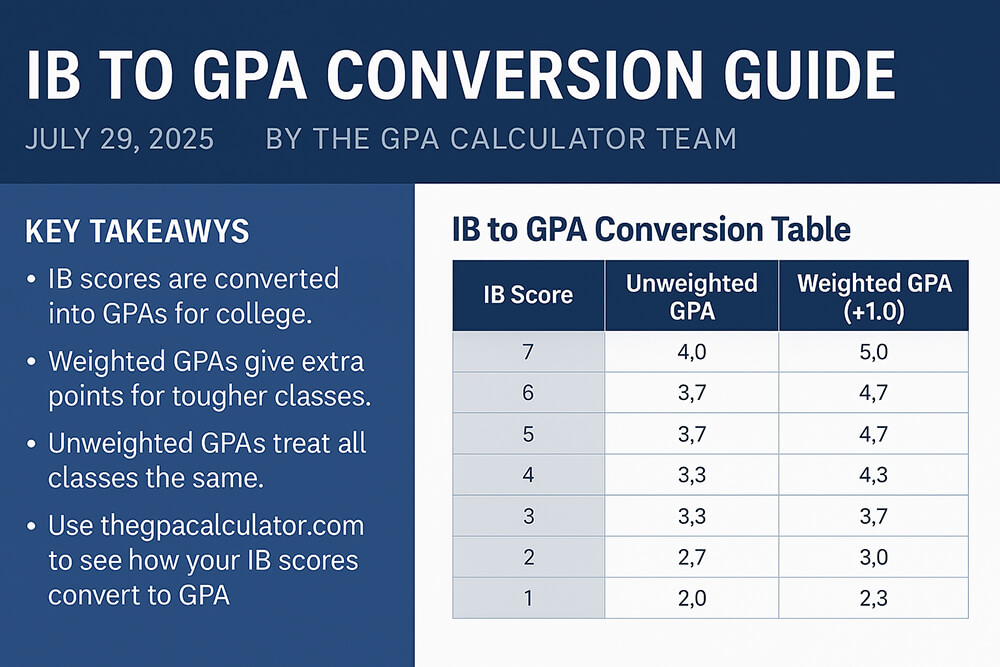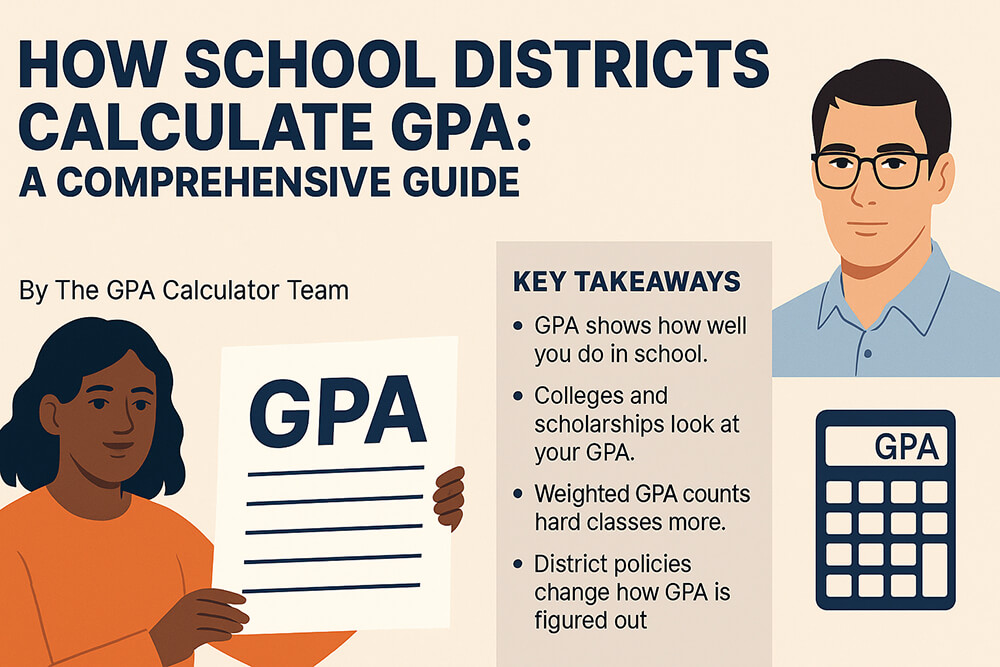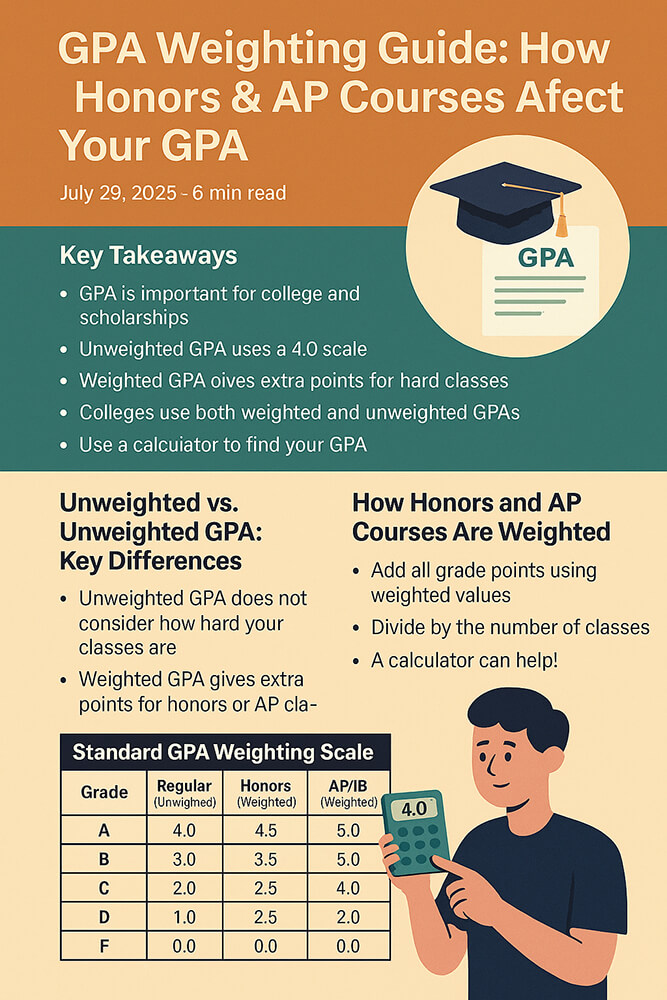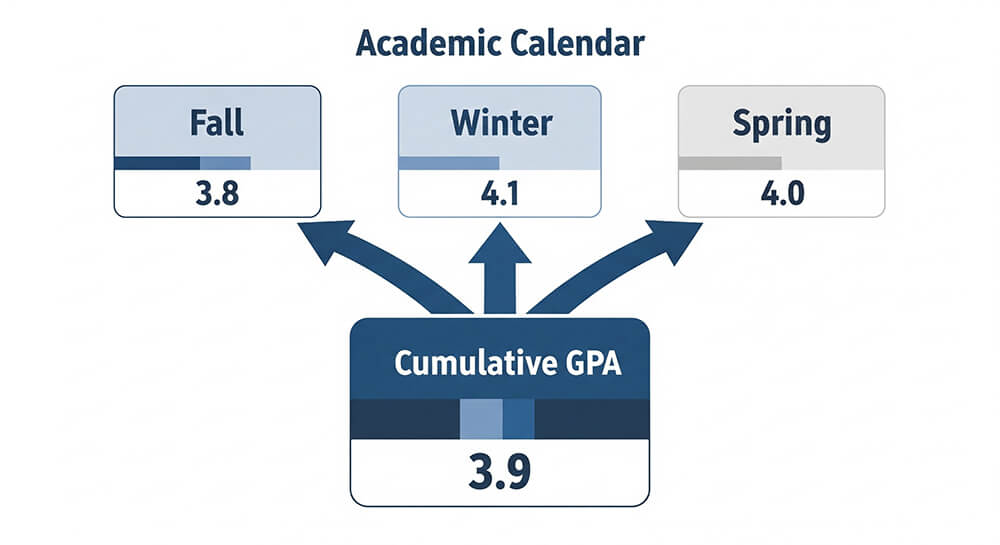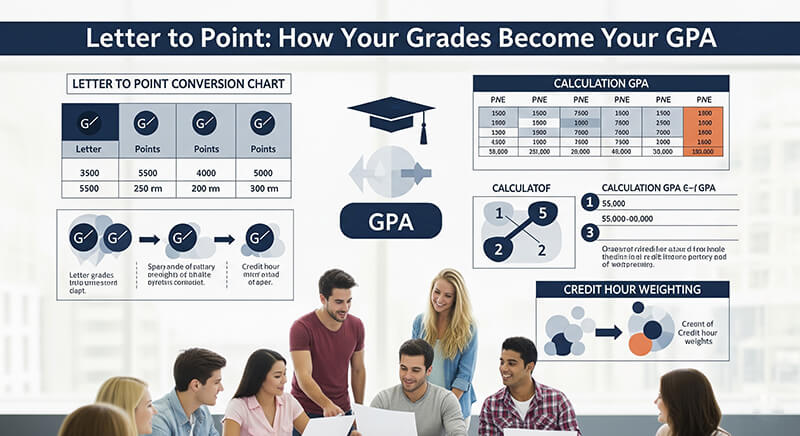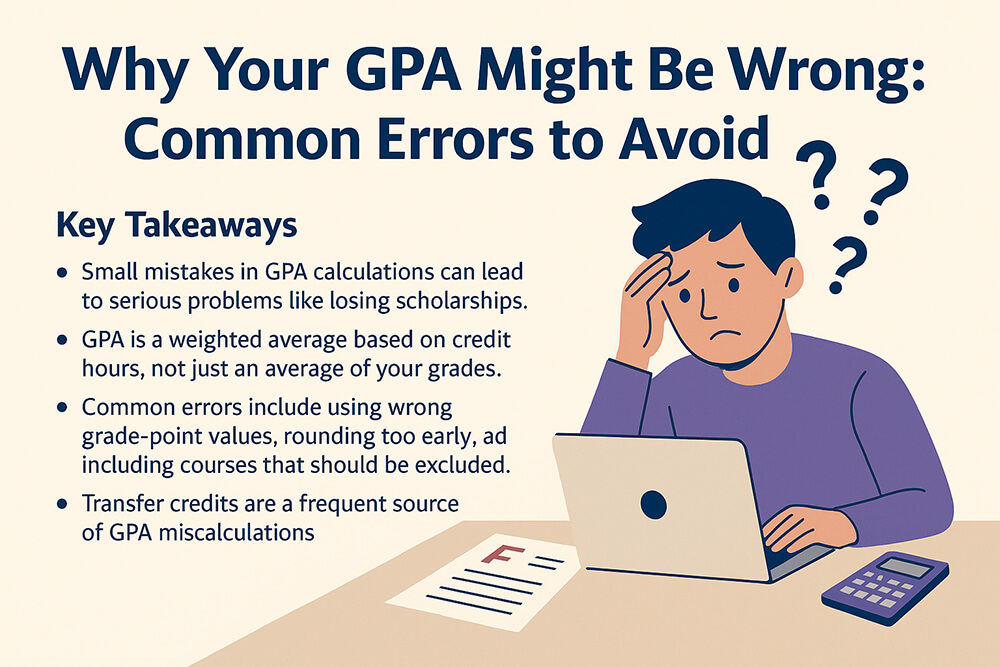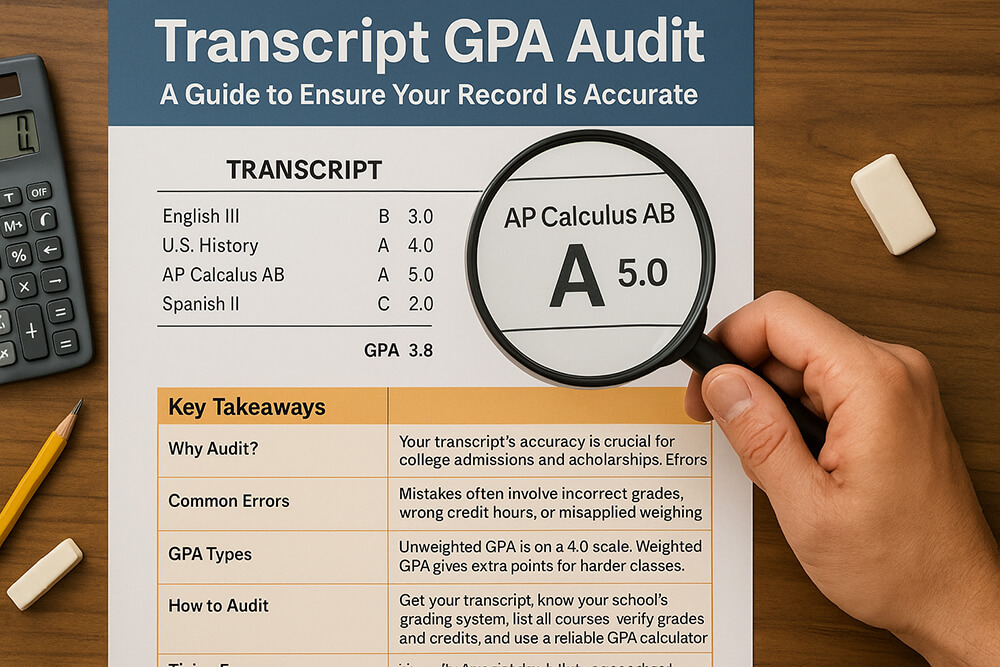Your Guide to the High School GPA Calculator
A Grade Point Average (GPA) is a key number that shows your academic work in high school. Colleges use it to see how well you did. A high school GPA calculator is a tool that helps you figure out this number quickly and correctly. It can help you track your progress and set goals for college.
Key Takeaways
| Feature | Description | Why It Matters |
|---|---|---|
| GPA Calculation | Your GPA is the average of your grades. It is found by turning letter grades into points, adding them up, and dividing by the number of classes. | This number is one of the most important factors for college admission. |
| Weighted vs. Unweighted | Unweighted GPA is on a 4.0 scale. All classes are equal. Weighted GPA gives extra points for harder classes like AP or Honors, often on a 5.0 scale. | Colleges look at both to see your performance and how much you challenged yourself. |
| Credit Hours | The correct way to find your GPA is to factor in credit hours. You multiply each grade's point value by its credit hours to get "quality points," then divide the total quality points by total credit hours. | This gives a more accurate GPA because it values year-long classes more than semester electives. |
| Strategic Planning | A GPA calculator lets you predict how future grades will affect your overall GPA. | This helps you set goals, choose classes, and see if you are on track for the colleges you want to attend. |
| Accuracy is Key | Different schools use different rules. A good calculator lets you customize settings to match your school's system. | Using a generic calculator can give you the wrong GPA. An accurate tool is essential for planning. |
Understanding the Basics of Your GPA
Your GPA is a simple way to show your academic success. It turns your letter grades into a single number. Knowing how this works is the first step to managing your schoolwork well.
The Simple GPA Formula
The basic GPA formula is straightforward. You add up the point value for each grade. Then you divide that total by the number of classes you took. This gives you your grade point average. For example, if you have two A's (4.0 each) and three B's (3.0 each), you add the points (4+4+3+3+3=17) and divide by the number of classes (5). Your GPA would be 3.4.
From Letter Grades to Grade Points
Each letter grade has a number value. This is how you start the calculation. A standard system for converting letters to points is simple. An A is 4.0 points, a B is 3.0, a C is 2.0, and a D is 1.0. An F is 0.0 points. Some schools also use plus (+) or minus (-) grades, which adjust the points slightly. For instance, a B+ might be 3.3 and a B- might be 2.7.
What Are Quality Points?
To get the most accurate GPA, you need to use quality points. You find quality points by multiplying the grade point value of a class by its credit hours. A year-long class has more credit hours than a semester-long class. This method makes sure that classes that last longer have a bigger impact on your final GPA. This is a more precise way to measure your work.
The Importance of Credit Hour Weighting
Many students make a mistake by simply averaging their grades. You must use a credit-hour weighted calculation for a true GPA. To do this, you divide your total quality points by your total credit hours. This is the correct way to calculate your GPA because it gives more weight to classes with more credits. A simple average can give you a misleading number.
Weighted vs. Unweighted GPA
Schools use two main types of GPA: weighted and unweighted. They tell different stories about your school performance. A good weighted vs. unweighted GPA calculator can help you see both.
What Is the Difference?
An unweighted GPA measures your grades on a 4.0 scale. It does not consider how hard your classes are. An A is always a 4.0, whether it's in a regular class or an AP class. A weighted GPA gives you extra points for taking more difficult classes. This means your GPA can go above 4.0. Understanding the difference between weighted and unweighted GPA is key to understanding your transcript.
How Honors and AP Courses Affect GPA
Taking hard classes can boost your GPA. The guide to GPA weighting for Honors and AP shows how this works. Schools often add points for these courses. An A in an Honors class might become a 4.5, and an A in an AP class could be a 5.0. This rewards you for challenging yourself with tougher subjects.
The 5.0 GPA Scale Explained
The 5.0 GPA scale is used for weighted GPAs. It allows students who take advanced courses to earn a GPA higher than 4.0. For example, getting a B in an AP class could equal 4.0 points on a weighted scale. This is the same as an A in a regular class. This system shows colleges that you took on a more rigorous workload.
Converting International Baccalaureate (IB) Grades
IB programs have their own grading system. A special IB to GPA conversion guide is needed to see how these grades translate. Like AP courses, IB classes are often weighted. An A in a higher-level IB course can add an extra point to its value. This helps colleges understand the difficulty of your IB coursework when they review your application.
Common Myths About Weighted GPA
There are many myths about weighted GPA that can be confusing. One common myth is that colleges only look at weighted GPAs. In reality, many colleges recalculate your GPA using their own standard method to compare all students fairly. They look at your unweighted GPA and your course rigor separately. It is important to do well in the hardest classes you can handle.
GPA System Variations and Issues
Not all high schools calculate GPA the same way. The rules can change from place to place. Understanding these differences is important for using a GPA calculator correctly.
How School Districts Calculate GPA Differently
Every school district can have its own rules. This is how school districts calculate GPA in unique ways. Some might give 1.0 extra point for an AP class, while others might use a different number. This is why you cannot easily compare your weighted GPA to a student's from another district. A flexible GPA calculator lets you enter your own school's specific rules for an accurate result.
Calculating GPA on a Trimester System
Some schools use a trimester calendar instead of semesters. A trimester GPA calculator is useful in this case. In a trimester system, the year is split into three parts. Your GPA is calculated more often. The basic formula is the same, but you will have more grading periods to track throughout the year.
How Pass/Fail Grades Impact GPA
Pass/Fail classes usually do not affect your GPA. A "Pass" grade earns you credit but does not have a point value to be averaged in. A "Fail" grade, however, can act like an F and lower your GPA. The impact of Pass/Fail grades on GPA depends on your school's policy. It is always best to check with your counselor.
Understanding GPA Inflation
GPA inflation means that the average GPA at schools has been rising over time. This can make it harder for colleges to judge a student's true ability. Learning about GPA inflation vs. deflation helps you understand your own GPA in context. Colleges are aware of this trend. They often look at more than just your GPA, like the rigor of your courses.
Strategic GPA Management
A GPA calculator is more than a simple tool. It helps you plan your academic future. By using it strategically, you can make better decisions about your classes and study habits.
Common GPA Calculation Errors to Avoid
Simple mistakes can lead to an incorrect GPA. Forgetting to weigh courses by credit hours is one of the most common GPA calculation errors. Another error is using the wrong point values for Honors or AP classes. Always double-check your school's specific grading policies to ensure your calculations are right.
The Freshman Year Advantage
Freshman year grades are very important. They set the foundation for your entire high school GPA. A strong start makes it much easier to maintain a high GPA later on. A freshman year GPA predictor can show you how your 9th-grade performance will affect your future. It motivates you to build good study habits early.
Performing a Transcript GPA Audit
Your transcript is your official academic record. Errors on it can cause problems. It is wise to perform a transcript GPA audit each year. Check for wrong grades, incorrect course names, or calculation mistakes. If you find an error, report it to your school counselor immediately to get it fixed. This act of ownership ensures your record is accurate for college applications.
Frequently Asked Questions (FAQ)
1. What is a good GPA for high school? A good GPA depends on your goals. The national average is around 3.0. For competitive colleges, you should aim for a 3.5 or higher. Top-tier universities often look for students with a GPA of 4.0 or very close to it.
2. How do I use a high school GPA calculator? To use the High-School GPA Calculator, you enter your course names, the letter grade for each, and the number of credits for each class. You also select the course type, such as Regular, Honors, or AP, to get an accurate weighted and unweighted GPA.
3. Do colleges prefer weighted or unweighted GPA? Colleges look at both. The unweighted GPA shows your raw performance, while the weighted GPA shows how much you challenged yourself. Many colleges recalculate your GPA on a standard 4.0 scale to compare you fairly with other applicants, but they always consider your course rigor.
4. Can I calculate my GPA if my school uses percentages? Yes. A good GPA calculator allows you to enter grades as percentages. It will convert them to the standard 4.0 scale for you. For example, a percentage between 93-100 is usually a 4.0.
5. How important is my freshman year GPA? Your freshman year GPA is very important. It is part of your cumulative GPA that colleges see. A strong start in 9th grade builds a solid foundation and shows colleges you are a serious student from the beginning.

